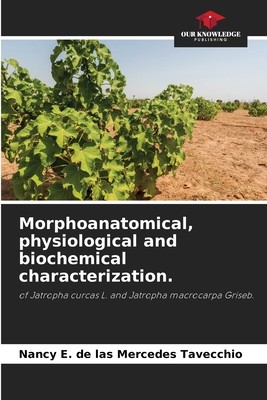
- We will send in 10–14 business days.
- Author: Nancy E de Las Mercedes Tavecchio
- Publisher: Our Knowledge Publishing
- ISBN-10: 6204149083
- ISBN-13: 9786204149080
- Format: 15.2 x 22.9 x 0.7 cm, softcover
- Language: English
- SAVE -10% with code: EXTRA
Morphoanatomical, physiological and biochemical characterization. (e-book) (used book) | bookbook.eu
Reviews
Description
In this book, two oil-producing species for biodiesel production with great adaptability to arid environments were studied: J. curcas and J. macrocarpa. The objective was to characterize their morphology, anatomy, biochemistry and microflora. In seeds, unsaturated fatty acids predominate; sugars and proteins are concentrated in embryos. Seeds of both species exhibit high viability; J. curcas has higher germination power and only J. macrocarpa shows physical dormancy. The early growth of J. curcas is greater than that of J. macrocarpa. The first internode of the stem shows a thick bark in both species and the pith contains starch granules. The stomatal density of the abaxial side of J. macrocarpa is lower than that of J. curcas. Restriction terminal fragment length polymorphism analyses correspond to microorganisms of the genus Streptomyces in both species. Gel electrophoresis indicates the presence of Chthonomonas in J. curcas and Pseudanabaena in both species. It is concluded that J. curcas has high germination power, high concentration of oils in its seeds and fast early growth.
EXTRA 10 % discount with code: EXTRA
The promotion ends in 12d.02:03:14
The discount code is valid when purchasing from 10 €. Discounts do not stack.
- Author: Nancy E de Las Mercedes Tavecchio
- Publisher: Our Knowledge Publishing
- ISBN-10: 6204149083
- ISBN-13: 9786204149080
- Format: 15.2 x 22.9 x 0.7 cm, softcover
- Language: English English
In this book, two oil-producing species for biodiesel production with great adaptability to arid environments were studied: J. curcas and J. macrocarpa. The objective was to characterize their morphology, anatomy, biochemistry and microflora. In seeds, unsaturated fatty acids predominate; sugars and proteins are concentrated in embryos. Seeds of both species exhibit high viability; J. curcas has higher germination power and only J. macrocarpa shows physical dormancy. The early growth of J. curcas is greater than that of J. macrocarpa. The first internode of the stem shows a thick bark in both species and the pith contains starch granules. The stomatal density of the abaxial side of J. macrocarpa is lower than that of J. curcas. Restriction terminal fragment length polymorphism analyses correspond to microorganisms of the genus Streptomyces in both species. Gel electrophoresis indicates the presence of Chthonomonas in J. curcas and Pseudanabaena in both species. It is concluded that J. curcas has high germination power, high concentration of oils in its seeds and fast early growth.


Reviews